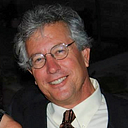SAQs for APUSH Topic 7.10 — The New Deal
5 min readMar 26, 2021
Fifteen questions designed to help students review for the annual exam and that relate to a series of programs, public work projects, financial reforms, and regulations enacted by President Franklin D. Roosevelt in the United States between 1933 and 1939.
- During the 1930s, policymakers responded to the mass unemployment and social upheavals of the Great Depression by redefining the goals and ideals of “modern American liberalism.” One bit of evidence in support of this claim is something called President Franklin Roosevelt’s New Deal. What did President Franklin Roosevelt’s New Deal seek to accomplish?
- Approximately what percent of the American workforce, at the worst, went unemployed in the years leading up to the New Deal?
- Provide one piece of evidence in support of the claim that during the 1930s there was “social upheaval.”
- During the 1930s, President Franklin Roosevelts New Deal, along with the work of other liberal policymakers, transformed the U.S. into a limited welfare state? What is a limited welfare state?
- During the 1930s, Franklin Roosevelt’s New Deal attempted to end the Great Depression by using government power to provide relief to the poor. Name and briefly describe one bit of evidence in support of this claim.
- During the 1930s, Franklin Roosevelt’s New Deal attempted to end the Great Depression by using government power to stimulate recovery. Name and briefly describe one bit of evidence in support of this claim.
- During the 1930s, Franklin Roosevelt’s New Deal attempted to end the Great Depression by using government power to reform the American economy. Name and briefly describe one bit of evidence in support of this claim.
- During the 1930s, conservatives in Congress and the Supreme Court sought to limit the New Deal’s scope. Name and briefly describe one bit of evidence in support of this claim.
- Although the New Deal did not end the Depression, it left a legacy of reforms and regulatory agencies. Name and briefly describe a regulatory agency born in the era of the New Deal and that still exists today. Also name a reform born in the era of the New Deal and that still exists today.
- Although the New Deal did not end the Depression, it fostered a long-term political realignment in which many ethnic groups, African Americans, and working-class communities identified with what political party?
- After World War II, Franklin Roosevelt’s liberal ideas found expression in President Lyndon Johnson’s Great Society, which attempted to use federal legislation and programs to end racial discrimination. Name and briefly describe how Lyndon Johnson’s Great Society attempted to use federal legislation and programs to end racial discrimination.
- After World War II, Franklin Roosevelt’s liberal ideas found expression in Lyndon Johnson’s Great Society, which attempted to use federal legislation and programs to eliminate poverty. Name and briefly describe how Lyndon Johnson’s Great Society attempted to use federal legislation and programs to eliminate poverty.
- After World War II, Franklin Roosevelt’s liberal ideas found expression in Lyndon Johnson’s Great Society, which attempted to use federal legislation and programs to address social issues (other than the elimination of poverty and the ending of racial discrimination.) Name and briefly describe how Lyndon Johnson’s Great Society attempted to use federal legislation and programs to address social issues (other than the elimination of poverty and the ending of racial discrimination.)
- After World War II, Franklin Roosevelt’s liberal ideas found expression in a series of Supreme Court decisions that expanded civil rights and individual liberties. Name and briefly one Supreme Court decision
- In the late 1960s and 1970s, liberalism came under increasing attack from a resurgent conservative movement. Those that advocated in favor of this movement called for a robust national defense, low taxes, minimum government regulation, and traditional social values. What are “traditional social values?”
- In the late 1960s and 1970s, liberalism came under increasing attack from a resurgent conservative movement. Those that advocated in favor of this movement called for a robust national defense, low taxes, minimum government regulation, and traditional social values. What term from the Gilded Age comes to mind when hearing of an economy consisting of “minimum government regulation?”
- In the late 1960s and 1970s, conservatives increasingly argued that liberal programs, the New Deal included, were counterproductive in fighting poverty and stimulating economic growth. Name and describe a famous speech given by a conservative in the late 1960s and 1970s and that argued that liberal programs were counterproductive in fighting poverty and stimulating economic growth.
- Ronald Reagan’s victory in the presidential election of 1980 represented an important milestone, allowing conservatives to enact significant tax cuts and continue the deregulation of many industries and thus in essence rejected a good portion of the liberal thinking that was at the core of Roosevelt’s New Deal. What was one “industry” that was “deregulated” as a result of Ronald Reagan’s victory in the presidential election of 1980?
— — — —
